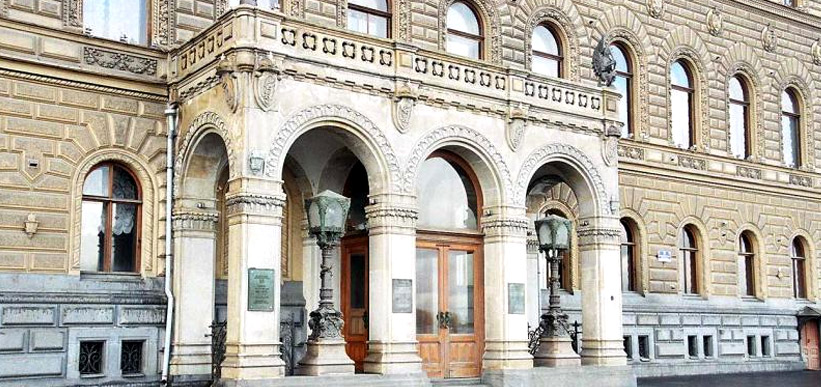The Neo-Renaissance style of architecture is commonly referred to as Renaissance Revival. It encompasses many of the architectural revival styles of the 19th century. These revival styles were not Gothic Revival or Greek Revival. Instead, they were inspired from a variety of classic Italian styles.
Among the prominent features of buildings designed using the Neo-Renaissance architecture were great staircases. Italian-style arches, balustrades, and arcades were also widely used. Many impressive buildings were created using this style of architecture. Let’s have a look at some of these masterpieces:
1. Vladimir Palace (Russia)
It was the last imperial palace to be built in Saint Petersburg, the second-largest Russian city. This palace was created for Russia’s Grand Duke Vladimir Alexandrovich. The building was designed by a team of architects comprising Vasily Kenel, Vladimir Shreter, Andrei Huhn, and Aleksandr Rezanov.
Its façade has a rich stucco rustication and patterns of Leon Battista Alberti’s palazzi located in Florence. The interior of this palace has been preserved well compared to the other residences of the Romanov family. Much of Vladimir’s collection of porcelain from the late 19th century has also been preserved.
2. Mentmore Towers (UK)
This 19th-century English country house has been known simply as ‘Metmore’ historically. It was built during the mid-19th century for the Rothschild family. The building was designed by Sir Joseph Paxton and George Henry Stokes, his son-in-law. Sir Joseph Paxton was hired for his brilliance in designing the greatly-admired Crystal Palace.
The interiors were inspired mainly from the Italian Renaissance. The drawing rooms and cabinets of the house were decorated in French gilded styles of late 18th century. It has been considered one of Victorian era’s greatest homes.
3. Hotel de Ville (France)
In the early 16th century, King Francis I decided to give Paris a splendid city hall. For this purpose, he appointed the Italian architect Dominique de Cortone and the French architect Pierre Chambiges. The work on the building could be finished only during the reign of Louis XIII in 1628.
It was reconstructed during the late 19th century under the guidance of architects Theodore Ballu and Edouard Deperthes. Today, this building houses the local administration of Paris. While the exterior was rebuilt based on the original design, the interior underwent considerable modifications.
4. Hamburg City Hall (Germany)
Located in the German city of Hamburg, this building is the seat of the local government. It was constructed in the late 19th century after the old city hall was destroyed. The cause of its destruction was the great fire, which occurred in 1842. It took nearly 44 years to construct a new building.
A group of seven architects designed the present building. This team of architects was led by the German architect, Martin Haller. Construction of the new building began in 1886 and was completed in 1897. The overall cost of construction amounted to about 80 million euros.
5. Oulu City Hall (Finland)
This building is the seat of Oulu’s municipal government. Oulu is a city in Northern Finland. The building was designed in the Neo-Renaissance style as the restaurant and hotel called Seurahuone. The architect of the building was Johan Erik Stenberg from Sweden.
In 1920, the third floor was added in accordance with the plans of architect Oiva Kallio. Many other changes were also made to the structure in the same year. During the renovation work that took place between 1978 and 1982, some of the changes were reversed.

